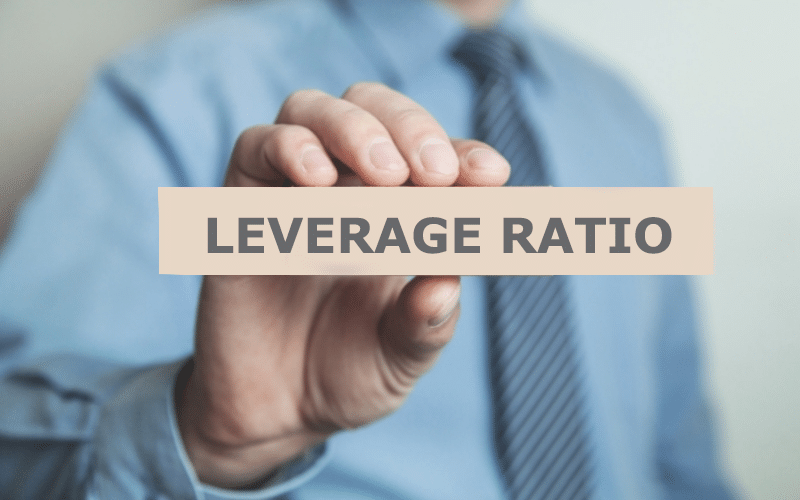
The leverage ratio is the proportion of debts in a company to the company’s capital. In other words, leverage ratio can be looked at as the status of a company’s financial standing in terms of its balance sheet statement, income statement, and other cash flow statements.
A debt burden is not a good thing for a company to have. However, in many instances, companies have to depend on debt to fund their growth. As an investor, you will not want to invest in a company whose growth risks being dragged by heavy debt obligations.
The basic principle of growth for a company with debt is its ability to generate more money income than it spends on paying its debt and associated interest. The leverage ratio integrated these aspects by evaluating the risk implications of investing in a company, considering its debt obligations against its cash and asset capabilities.
Debt loads vary widely across different sectors of the economy. Typically, leverage ratios are higher in sectors with a high number of competitors and a high level of profitability. The default risk level is relatively low in such an industry. Therefore, investors may be comfortable investing in companies in such sectors despite their debt standing.
However, sectors with a low number of competitors and relatively low profitability are generally expected to have low debt loads. Consequently, an investor would be hard-pressed to invest in a heavily indebted company in such circumstances. The risk level is higher in such an industry.
Leverage ratios are measures in terms of weights, with the lowest one being 0.1. A ratio score of 1 is interpreted as meaning that a company’s debt obligations are equal to its liquid assets. Figures above 1 denote a company in debt. This means that the company owes more than it owns.
For instance, if the leverage ratio is 3:1, then it means that the company owes $3 for every $1 invested.
Types of Leverage Ratios
Debt-to-Equity Ratio
This refers to the proportion of the assets owned by a company relative to the total value of investments. It depicts a clearer picture of the distribution of capital in a company.
Its formula is worked out as follows:
Debt-to-Equity Ratio = Total Debt ÷ Total Equity
From the formula, we can deduce that the Debt-to-Equity ratio tells us the sources of capital in a company.
We can tell the level of dependency of a company on debt for its growth. For example, if a company has $1 million worth of total equity and a debt portfolio of $500,000, then its debt-equity ratio will be 500,000/1,000,000 = 0.5. This means that the company is financially sound.
The more a company depends on debt, the higher the risk of investing in it. However, it is worth noting that a slight dependency on debt is good because it gives the company leverage.
Debt-to-Capital Ratio
This type of ratio gives us a detailed understanding of the standing of a company in terms of the distribution of its capital. Specifically, it tells us the sources of capital in a company.
Its formula is as follows:
Debt-to-Capital Ratio = Total Debt ÷ (Total Equity + Total Debt)
The leverage ratio allows us to find out the level of borrowed capital in a company’s books. The ratio tells investors the exact status of a company’s capital and the extent to which the assets have been funded using borrowed cash.
For example, if company X owes its debtors a total of $4 million, and it has $5 million worth of equity, its total capital will be $4 million + $5 million = $9 million.
Debt-to-Capital Ratio = $ 4,000,000 ÷ 9,000,000 = 0.4
A debt capital ratio of 0.2 means that the company’s debt constitutes 44.4% of its capital. This means that the company is in a healthy financial state.
Debt-to-Assets Ratio
This is a measure of the proportion of assets in a company that has been funded using borrowed funds. It shows investors the actual status of ownership of assets held by a company.
It is calculated as:
Debt-Assets Ratio = Total Debt ÷ Total Assets
From the formula above, you can tell the proportion of assets that have been obtained through debt financing. Investors will assess a company’s standing based on the percentage of its assets relative to the debt owed. A company is considered stable when its assets are worth more than the debt.
For example, if a company has assets worth $2 million and it’s debts amount to $1.5 million, its debt asset leverage ratio will be = $500,000 ÷ $2,000,000 = 0.75. The number shows that the company’s assets are worth more than its debt, making the company a worthy investment.
Debt-to-EBITDA Ratio
EBITDA means Earnings Before Interest Taxes Depreciation and Amortization, and it is a measure of how much a company is impacted by debt.
It is calculated as:
Debt-to-EBITDA Ratio = Total debt ÷ EBITDA
For example, assuming that a company has debt worth $2 million, and an EBITDA of $300,000, its debt EBITDA ratio will be calculated as = $2,000,000 ÷ $300,000 = 6.7
Bottom line
The leverage ratio is a crucial indicator of the performance and financial stability of a company. You should know the various types of ratios and apply them appropriately in your assessment of a prospective investment option.





